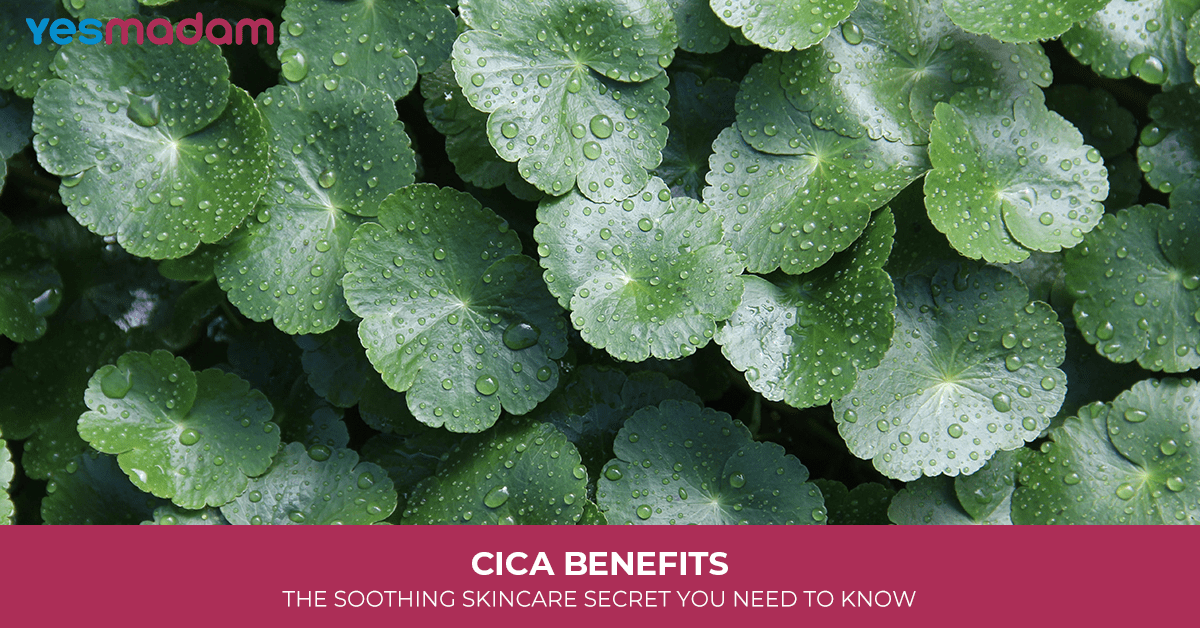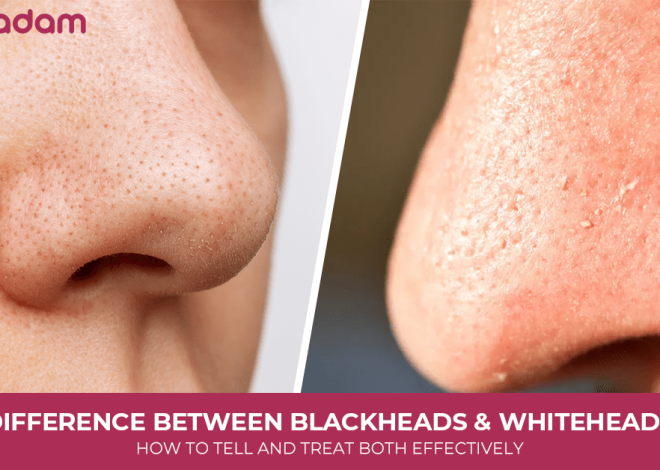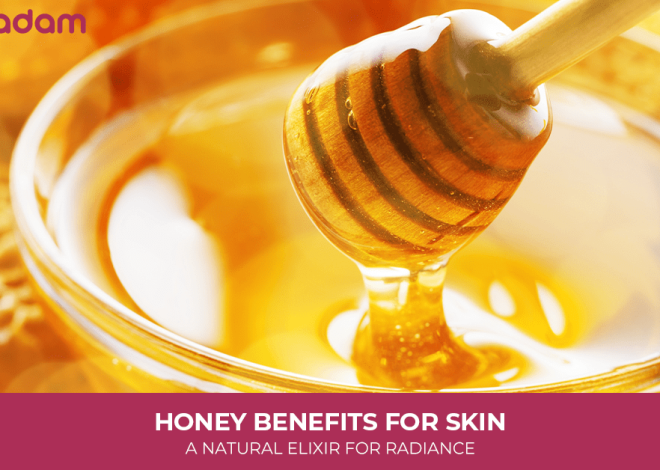
Cica Benefits: The Soothing Skincare Secret You Need to Know
In today’s world of endless skincare options, one ingredient that consistently stands out for its calming and healing properties is cica. You may have heard people raving about cica benefits, especially if you struggle with sensitivity, redness, or dryness. But what is cica really, and how does it work on the skin?
From its roots in traditional medicine to its place in today’s advanced skincare formulations, cica is more than just a passing trend. It’s a powerful, plant-based solution that offers hydration, healing, and anti-aging support all in one. Let’s break down the science, history, and benefits behind this wonder herb.
Table of Contents
What Is Cica?

Cica is the common name for Centella Asiatica, also known as Gotu Kola or “tiger grass.” This small green herb has been treasured in Ayurvedic and traditional Chinese medicine for thousands of years. Healers once used it to treat wounds, burns, and even anxiety.
The skincare world later discovered its potential when studies showed that compounds in cica particularly asiaticoside, madecassoside, and asiatic acid, promote collagen production and improve skin’s natural repair process. Today, you’ll find cica as a star ingredient in creams, serums, and masks designed for sensitive or stressed skin.
Why Cica for Skin Has Become So Popular
Cica’s popularity isn’t hype, it’s rooted in results. Dermatologists often recommend cica-based products for people with weakened skin barriers or chronic irritation. Unlike harsh actives that may work fast but can cause dryness, cica is gentle yet effective.
Here’s why people are embracing cica for skin:
- Holistic healing: Works on multiple levels, calming, hydrating, and repairing.
- Safe for all skin types: Even people with eczema or rosacea often tolerate it well.
- Natural but scientific: It bridges traditional herbal medicine with modern dermatology.
This unique blend of tradition and science makes cica a universal skincare favorite.
Cica Plant for Skin: A Natural Remedy With History
The cica plant has a fascinating story. Ancient legends say that wounded tigers rolled in Centella Asiatica leaves to heal their injuries, earning it the nickname “tiger herb.” While that story may be symbolic, it reflects what science later confirmed: the plant speeds up wound healing and reduces inflammation.
In traditional practices:
- Ayurveda: Used for calming the mind and treating skin conditions.
- Chinese medicine: Prescribed for healing burns, cuts, and infections.
- Southeast Asia: Eaten as a herb in salads or drinks to boost overall health.
Its long-standing reputation shows that the cica plant for skin isn’t just a modern fad, it’s a tried-and-tested remedy passed down for centuries.
What Does Cica Do for Skin?

So, what does cica do for skin on a biological level? Let’s break it down:
- Soothes Inflammation: Cica contains saponins that calm skin irritations, making it excellent for sensitive or acne-prone skin.
- Repairs the Skin Barrier: By increasing the production of ceramides and collagen, cica strengthens the skin’s natural defense, keeping out pollutants and locking in hydration.
- Accelerates Healing: Asiaticoside and madecassoside stimulate fibroblast activity — the cells responsible for wound healing. This means acne marks, scratches, or irritation fade faster.
- Deep Hydration: Unlike heavy oils, cica hydrates without greasiness, making it perfect for oily and combination skin types.
- Anti-Aging Benefits: Through collagen stimulation, cica helps keep skin firm, reducing fine lines and improving elasticity over time.
Simply put, cica multitasks, it’s a hydrator, healer, and protector rolled into one.
How to Use Cica in Your Skincare Routine
The best part about cica is how versatile it is. Depending on your needs, you can incorporate it in different ways:
- Cica Creams: Ideal for repairing dry patches or soothing irritation at night.
- Serums: Lightweight, concentrated formulas that work well for redness and sensitivity.
- Balms: Perfect for targeted healing of flaky or damaged areas.
- Masks: A quick rescue treatment when your skin feels inflamed or dehydrated.
- Cleansers/Toners: Gentle options that add an extra calming step without stripping the skin.
Pro tip: Pair cica with actives like retinol or vitamin C. Since cica is soothing, it can balance out potential irritation from stronger ingredients.
Who Should Use Cica Products?
While cica is safe for nearly everyone, certain groups benefit the most:
- People with sensitive skin prone to redness.
- Those dealing with acne scars or breakouts.
- Individuals with eczema or rosacea flare-ups.
- Anyone who wants anti-aging support without irritation.
- Men experiencing razor burns or shaving irritation.
If your skin ever feels stressed, dry, or inflamed, cica is a safe and reliable solution.
Possible Side Effects of Cica
While cica is generally considered safe and widely used in skincare for its soothing and healing properties, some individuals may experience certain side effects. These effects depend on the form of use, topical or oral, and individual skin sensitivity.
1. Mild Allergic Reactions
Some people may be allergic to plant-based extracts, including cica. This could show up as redness, itching, or a rash after applying a product. Though rare, it’s always best to do a patch test on a small area of skin before using cica-based creams or serums regularly.
2. Skin Irritation in Sensitive Cases
While cica is known for soothing, certain formulations (especially those with added fragrances, alcohol, or other actives) may cause irritation. If your skin stings, burns, or feels inflamed after use, it’s a sign the product may not suit you.
3. Potential Photosensitivity (with Oral Use)
Topical cica in skincare doesn’t usually cause sun sensitivity. But if taken orally (as supplements), some studies suggest Centella Asiatica may increase sensitivity to sunlight. In such cases, wearing sunscreen becomes extra important.
4. Digestive Issues (When Consumed Orally)
When consumed as teas, extracts, or supplements, high doses of cica have been linked to nausea, stomach upset, or drowsiness in some individuals.
5. Not Ideal During Pregnancy Without Medical Advice
Some herbal studies suggest that internal use of cica might affect hormones or blood circulation. Pregnant or breastfeeding women should avoid oral consumption unless approved by a doctor.
How to Reduce the Risk of Side Effects
- Always patch test before using a new skincare product.
- Start slow, use cica products a few times a week before going daily.
- Choose fragrance-free or minimal-ingredient formulas if you have sensitive skin.
- If using oral cica supplements, consult a healthcare professional first.
The Future of Cica in Skincare
Cica isn’t just a passing trend. With ongoing research into its wound-healing and collagen-boosting abilities, experts believe it may play a bigger role in medical-grade skincare in the future. Already, many dermatologists are incorporating cica into post-procedure care for patients after laser treatments or chemical peels.
This evolution proves that cica is here to stay, not just as a beauty buzzword, but as a scientifically backed skincare essential.
Conclusion
The benefits of cica are far-reaching, making it one of the most versatile skincare ingredients out there. From reducing redness and irritation to boosting collagen and healing scars, cica for skin addresses multiple concerns naturally and effectively.
Whether you’re just starting your skincare journey or looking for a reliable, gentle ingredient to complement stronger actives, cica is a worthy addition to your routine. After all, when nature and science come together, the results can truly transform your skin.
FAQs
1. What is cica in skincare?
Cica is an extract from the Centella Asiatica plant, also known as Gotu Kola. It’s widely used in skincare for its healing, soothing, and anti-inflammatory properties.
2. Is cica good for sensitive skin?
Yes, cica is excellent for sensitive skin. It calms irritation, reduces redness, and helps strengthen the skin barrier, making skin more resilient over time.
3. Can cica help with acne?
Cica doesn’t directly kill acne bacteria but supports healing of inflamed skin and acne scars. By reducing redness and speeding recovery, it makes acne less noticeable.
4. Does cica reduce redness?
Yes, one of cica’s main benefits is reducing redness caused by irritation, rosacea, or acne. It helps even out skin tone naturally.
5. How does cica hydrate the skin?
Cica works by strengthening the skin barrier and preventing water loss. It’s lightweight, so it hydrates deeply without clogging pores.
6. Can I use cica with other active ingredients?
Definitely. Cica pairs well with stronger actives like retinol or exfoliating acids because it minimizes potential irritation and balances the skin.
7. Is the cica plant the same as gotu kola?
Yes, both names refer to Centella Asiatica. Gotu Kola is its traditional name, while “cica” is the popular skincare-friendly abbreviation.
8. Does cica have anti-aging benefits?
Yes, cica boosts collagen production, which helps skin stay firm and elastic. Over time, this reduces fine lines and slows visible aging.
9. Can men use cica skincare products?
Of course. Men benefit from cica too, especially for calming razor burns, irritation, and dryness after shaving. It’s truly universal.
10. How often should I use cica in my routine?
Cica can be used daily in creams, serums, or balms. With consistent use, most people notice visible improvements in hydration and calmness within a few weeks.



